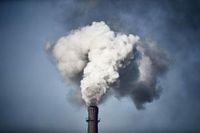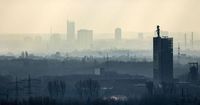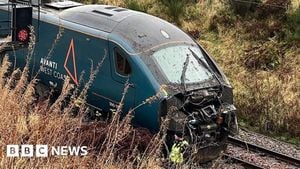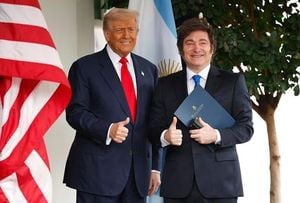In a remarkable leap for environmental monitoring, former Vice President Al Gore and his nonprofit coalition, Climate TRACE, have unveiled a new satellite and artificial intelligence (AI) system that enables people around the world to track deadly soot pollution in their own neighborhoods. Announced on September 24, 2025, this initiative marks a significant expansion of the group’s original mission, which focused on tracking heat-trapping methane emissions, and now promises to give ordinary citizens the power to see where harmful particle pollution is coming from—sometimes right in their own backyards.
For decades, the dangers of burning fossil fuels have been well known, but the ability to pinpoint exactly where fine particulate matter, or PM2.5, originates and how it drifts across cities and neighborhoods has remained elusive. According to the Associated Press, Gore’s coalition now employs an impressive suite of 300 satellites and 30,000 ground-tracking sensors, all coordinated through advanced AI, to monitor a staggering 137,095 sources of particle pollution worldwide. Of these, 3,937 have been identified as “super emitters,” responsible for a disproportionate share of the pollution burden.
“It’s difficult, before AI, for people to really see precisely where this conventional air pollution is coming from,” Gore explained in a video interview, as reported by the Associated Press. “When it’s over in their homes and in their neighborhoods and when people have a very clear idea of this, then I think they’re empowered with the truth of their situation. My faith tradition has always taught me you will know the truth and the truth shall set you free.”
The numbers behind this initiative are sobering. Scientific studies and reports cited by both the Associated Press and TechCrunch estimate that particle pollution kills millions of people globally every year, including tens of thousands in the United States alone. In fact, TechCrunch notes that fine particulate matter may be responsible for up to 10 million deaths annually worldwide. And these aren’t just abstract figures—Gore’s team has mapped out exposure hotspots, finding that Karachi, Pakistan, tops the list for most people exposed to soot, followed by Guangzhou, China; Seoul, South Korea; New York City; and Dhaka, Bangladesh.
What sets this new system apart isn’t just its scope, but its granularity. Climate TRACE’s tool can track pollution plumes on a neighborhood-by-neighborhood basis across 2,500 cities, offering both raw data and visualizations that reveal where PM2.5 pollution drifts and accumulates. According to TechCrunch, these visualizations will eventually be available worldwide, allowing users to see not just the presence of pollutants but also their sources—effectively giving polluters “nowhere to hide.”
Gore’s personal journey to this project began with a visit to Memphis, Tennessee, where he witnessed firsthand how refinery emissions could drift over residential neighborhoods. This experience inspired him to challenge the Climate TRACE coalition: “Could we track these pollutants around the world?” The answer, it turns out, was yes—thanks in large part to AI’s ability to process and synthesize data from hundreds of millions of sources. “The very idea of tracking 662 million sites around the world, I mean without AI, people couldn’t have imagined doing something like that,” Gore told TechCrunch. “But of course, as we’ve all seen in the last couple of years, AI can do stuff that is quite extraordinary.”
The health impacts of fine particulate pollution are far-reaching. While its links to lung cancer and heart disease have long been established, recent research has shown that even at legal levels, PM2.5 increases the risk of a host of deadly conditions, including low birth weight, kidney disease, Parkinson’s, Alzheimer’s, dementia, and type 2 diabetes. TechCrunch highlights the work of scientist Joel Schwartz, whose pioneering studies decades ago led to the ban on leaded gasoline, and who was among the first to illuminate the dangers of PM2.5 exposure. Today, even the lowest legal thresholds are associated with tens of thousands of excess deaths in the United States each year.
Gore is hopeful that this new transparency will catalyze change on a global scale. “I think that it creates a set of conditions and incentives that could very well make it more likely that we can accelerate the transition away from carbon-intensive facilities,” he told TechCrunch. “It makes it more likely to build political support for the conversion of these facilities to much less emitting technologies.”
Interestingly, while soot pollution doesn’t directly contribute to global warming the way methane does, it stems from the same fossil fuel combustion processes. “It’s the same combustion process of the same fuels that produce both the greenhouse gas pollution and the particulate pollution that kills almost 9 million people every single year,” Gore said in an interview cited by the Associated Press. He offered a stark example: Cancer Alley, a 65-mile stretch between Baton Rouge and New Orleans, is so heavily polluted by the petrochemical industry that, according to Climate TRACE data, if it were a country, its per capita emissions would rank fourth in the world, just behind Turkmenistan.
Looking ahead, Gore and his coalition aim to make this data even more accessible. Within about a year, he hopes that daily soot pollution updates will be available and integrated into popular weather apps, much like allergy or pollen forecasts. This would allow people everywhere to make informed decisions about their health and safety in real time.
The ultimate ambition of Climate TRACE isn’t just to inform, but to empower. By shining a light on the sources and movements of deadly pollution, the project aims to give communities the tools they need to demand action—whether that means pressing for cleaner technologies, stricter regulations, or simply making smarter choices about where to live and work.
As the world grapples with the twin crises of air pollution and climate change, the ability to see, track, and understand the invisible threats in our air may prove to be a turning point. With AI and satellite technology now bringing unprecedented transparency to the fight against pollution, the hope is that knowledge truly will set us free—one neighborhood at a time.







